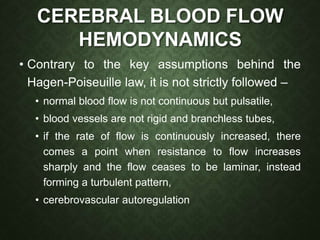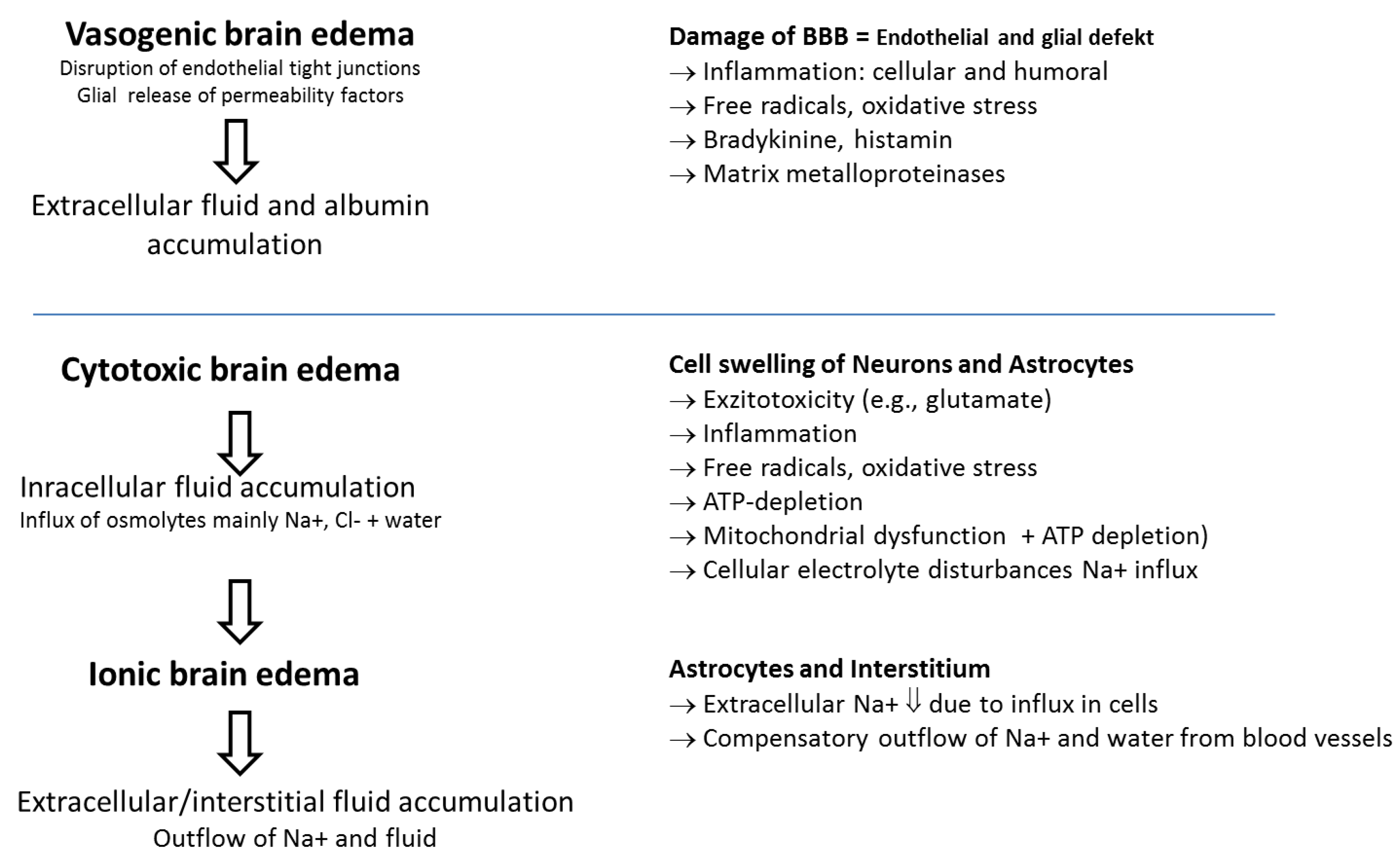CPP MABP meam arteial blood pressure - ICP. Non-invasive assessment of cerebral perfusion characteristics is feasible with SPECT and fractal analysis in patients with acute SAH and may help evaluating micro vascular function in SAH.

Cerebral Blood Flow And Its Regulation
The pressure difference is the gradient that is necessary to drive blood from the aorta into the cranial compartment.

. The ___ is a large network of neurons within the brain stem that is essential for maintaining wakefulness. Cerebral metabolic rate CMR autoregulation CO 2 reactivity and O 2 reactivity are the main factors affecting cerebral blood flow CBF. CPP is defined by the equation.
2Increasing blood pressure breaks the vasodilatory stimulus for. ----- Perfusion computed tomography CT is a technique that allows rapid qualitative and quantitative evaluation of. Temperature and anesthetic medications also each influence CBF.
See the answer See the answer See the answer done loading. Factors Affecting Perfusion. As MAP decreases the opposite occurs.
The normal brain weighs 1400 g and contains 75 cc of CSF and 75 cc of blood. Our findings that vasospasm affects cerebral perfusion to an increasing extent with increasing vasospasm are in accordance with the results of other clinical and experimental studies 13 1619. Figure 42-1 The relationship between cerebral blood flow CBF and mean.
The cerebral injury following trauma is heterogeneous and therefore the optimal CPP at which cerebral oxygenation is best maintained needs to be identified. CSF is produced at 400-500 ccday. When autoregulation is intact CBF is maintained at a constant level across a wide range of CPPs 50 to 150 mm Hg.
There are 3 factors that influence the Cerebral Perfusion Pressure of blood in the brain. In the general population cerebral hypoperfusion is a risk factor for cognitive dysfunction and dementia 24. Is the blood viscosity These are also called rheologic factors.
Blood flow and perfusion to the brain depend upon an adequate blood pressure gradient. The fractal dimension FD was used to describe the overall complexity of global cerebral perfusion. Carbon dioxide will increase blood flow to the brain as it will cause vasodilation.
Cerebral Perfusion Pressure CPP is the pressure gradient between the systemic blood pressure and the pressure in the cranial compartment. This would be to note the behavior in the following. The relationships among the latter three are depicted in Figure 42-1.
1aIf an intracranial baroreceptor exists then in response to physiologically-relevant decreases in brain perfusion it. It carries oxygen from the lungs and nutrients from the gastrointestinal tract. Cerebral perfusion pressure CPP is routinely monitored in conjunction with the ICP because it is an important determinant of cerebral blood flow CBF.
A The traditional management of traumatic brain injury involves a stair-step addition of treatments as necessary to control intracranial pressure ICPCSF cerebrospinal fluid. Cerebral perfusion Defined as the steady-state delivery of nutrients and oxygen via blood to brain tissue parenchyma per unit volume and is typically measured in milliliters per 100 g of tissue per minute. Mean transit time MTT average transit time in secs for blood to pass through a given region of brain tissue.
Varies according to the distance traveled between arterial inflow and venous. There are 3 factors that influence the Cerebral Perfusion Pressure of blood in the brain. The cranium can absorb an additional 100-150 cc fluid before ICP begins to rise this ability to conform increases as patients age volume may shrink as much as 30.
How do oxygen and carbon dioxide affect cerebral blood flow and how can this be manipulated clinically. It is the difference between the mean arterial pressure MAP and the intracranial pressure ICP measured in millimeters of mercury mm Hg. List them and describe their relationships.
Therefore if you hyperventilate a patient then you will decrease blood flow to the brain as there will be less carbon dioxide in the blood to cause vasodilation. Is the length of the tube a fixed quantity. B The cerebral perfusion pressure CPP management strategy is based on the vasodilatory cascade from Rosner et al.
In the setting of vasospasm cerebral perfusion has previously been investigated but rarely were asymptomatic patients included. Unlike most organ systems whose perfusion pressure is dependent. This problem has been solved.
As MAP rises cerebral blood vessels constrict so the brain doesnt get too much blood. Maintaining appropriate CPP is critical in managing patients with intracranial pathology including traumatic brain injury. Best poss score 15 the lowest score 3 a score less than 7 is consistant with a significant alteration in level of consciousness.
Is the pressure difference driving flow ie. - Impaired cerebral perfusion and oxygenation of brain cells - Sustained intracranial hypertension life threatening brain volume. 50 - 60 mL100 gmin.
Abnormal flexion upper arms move upward to the chest elbows wrists and fingers flex legs may extend with internal rotation feet planter flexed. Therefore differences in cerebral perfusion between patients with and without diabetes might explain their differences in cognitive function. Cerebral Blood Flow CBF The amount of blood in mL passing through 100 g of brain tissue in 1 minute.
Previous studies on cerebral perfusion in patients with type 2 diabetes are scarce. A blow to the head or a penetrating head injury that damages the brain. Terms in this set 58 Traumatic brain injury.
Intracranial pressure and cerebral perfusion pressure as risk factors in children with traumatic. The pt should know name date and location - ability to follow commands. Blood is a connective tissue comprised of a liquid extracellular matrix termed as blood plasma which dissolves and suspends multiple cells and cell fragments.
Alterations in cerebral perfusion. Claret Teruel G Cambra Lasaosa FJ Pons Odena M Noguera Julian A Palomeque Rico A. Brain blood flow is driven by cerebral perfusion pressure CPP which is determined by the difference between the mean arterial blood pressure MAP and intracranial pressure ICP Fig.
Cerebral blood vessels automatically constrict or dilate to maintain adequate cerebral perfusion pressure CPP Mean arterial pressure MAP CO2 O2 levels drive this process. Control of systemic circulation by an intracranial baroreceptor. Elaboration of thought and goal-oriented behavior are functions of the area of the brain.
Is the radius of the blood vessels. The factors affecting cerebral blood flow can be classified by the factors in the Hagan-Poiseuille Equation where. Cerebral perfusion pressure CPP is the net pressure gradient that drives oxygen delivery to cerebral tissue.
Use this ineffective tissue perfusion nursing care plan guide to help you create nursing interventions for this nursing diagnosis.

Cerebral Blood Flow Autoregulation Deranged Physiology

Cerebral Blood Flow Autoregulation Deranged Physiology

The Impact Of Age On Cerebral Perfusion Oxygenation And Metabolism During Exercise In Humans Braz 2016 The Journal Of Physiology Wiley Online Library

Medical Sciences Free Full Text Intensive Care In Traumatic Brain Injury Including Multi Modal Monitoring And Neuroprotection Html
0 Comments